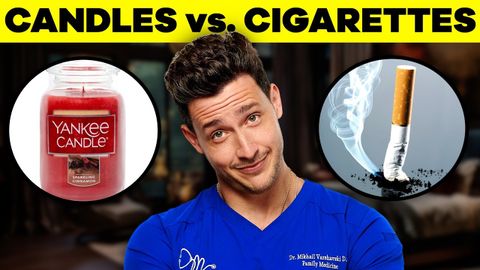都說吸二手菸對身體不好,那香氛蠟燭呢? (The Truth About Scented Candles)
VoiceTube 發佈於 2024 年 06 月 14 日  沒有此條件下的單字
沒有此條件下的單字US /ˈɛvɪdəns/
・
UK /'evɪdəns/
- n. (u.)證據;證據 (法律)
- v.t.表明;證明
- v.i.是重要的
- n. (u.)物質
- n.件事情;問題;原因
- n. (c./u.)大小;規模;魚鱗;比例;等級;標尺
- v.t./i.測量;攀登;魚鱗
US /kənˈsɪdər /
・
UK /kən'sɪdə(r)/
